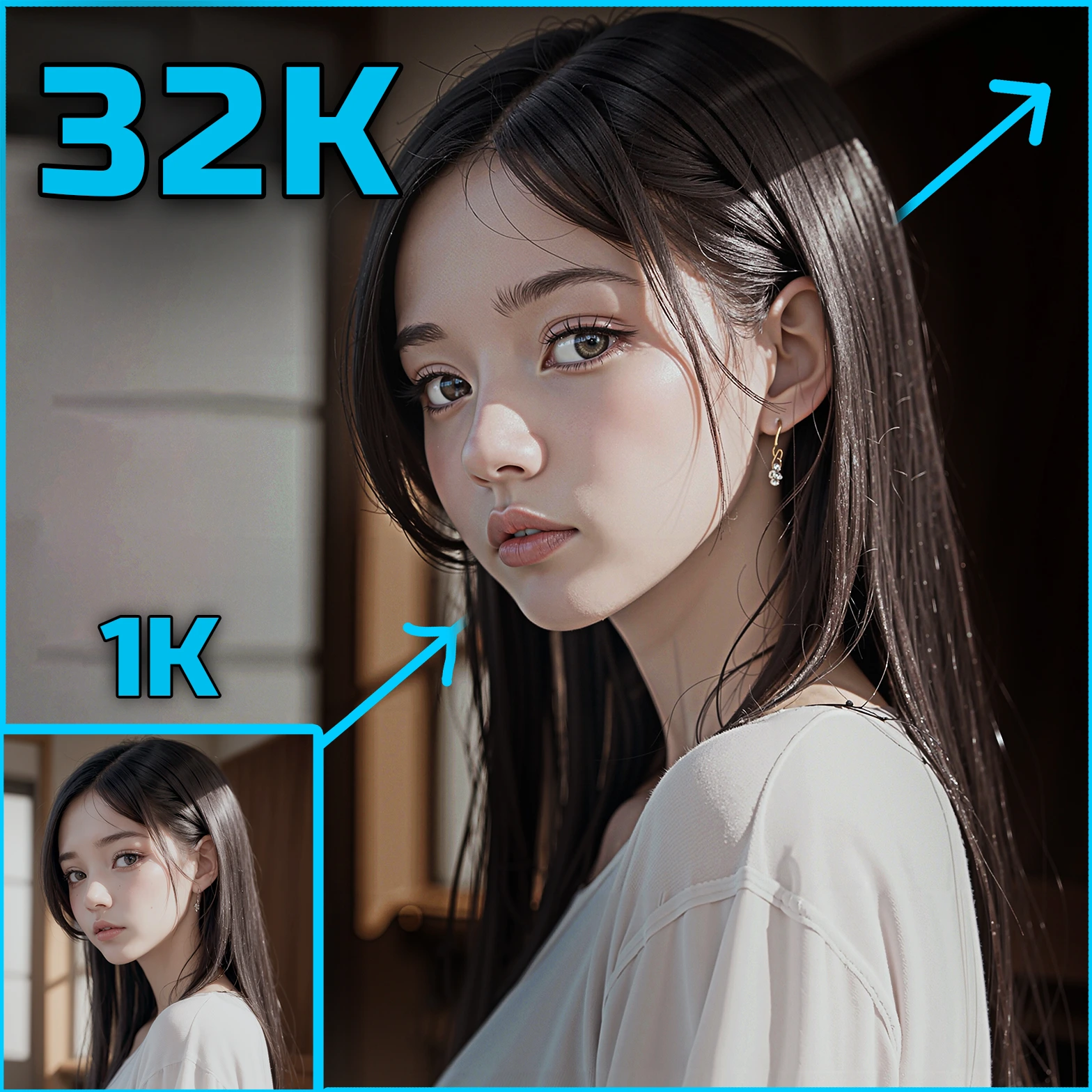ComfyUI Node: Primere Model Concept Selector
PrimereModelConceptSelector
CategoryPrimere Nodes/Dashboard
CosmicLaca (Account age: 3939days) Extension
Primere nodes for ComfyUI Latest Updated
2025-03-29 Github Stars
0.12K
How to Install Primere nodes for ComfyUI
Install this extension via the ComfyUI Manager by searching for Primere nodes for ComfyUI- 1. Click the Manager button in the main menu
- 2. Select Custom Nodes Manager button
- 3. Enter Primere nodes for ComfyUI in the search bar
Visit ComfyUI Online for ready-to-use ComfyUI environment
- Free trial available
- 16GB VRAM to 80GB VRAM GPU machines
- 400+ preloaded models/nodes
- Freedom to upload custom models/nodes
- 200+ ready-to-run workflows
- 100% private workspace with up to 200GB storage
- Dedicated Support
Primere Model Concept Selector Description
Versatile node for selecting and configuring AI model concepts to streamline artistic outcomes.
Primere Model Concept Selector:
The PrimereModelConceptSelector is a versatile node designed to help you select and configure different model concepts for your AI art projects. This node allows you to choose from various model concepts, such as Normal, Cascade, and Hyper-SD, and customize their settings to fit your specific needs. By providing a range of parameters, it enables you to fine-tune the model's behavior, ensuring optimal performance and results. The primary goal of this node is to streamline the process of selecting and configuring model concepts, making it easier for you to experiment with different configurations and achieve the desired artistic outcomes.
Primere Model Concept Selector Input Parameters:
cascade_stage_a
This parameter represents the first stage of the cascade model. It is used to configure the initial settings for the cascade model concept. The specific impact on the model's execution and results will depend on the values provided for this parameter.
cascade_stage_b
This parameter represents the second stage of the cascade model. It is used to configure the intermediate settings for the cascade model concept. The specific impact on the model's execution and results will depend on the values provided for this parameter.
cascade_stage_c
This parameter represents the third stage of the cascade model. It is used to configure the final settings for the cascade model concept. The specific impact on the model's execution and results will depend on the values provided for this parameter.
cascade_clip
This parameter is used to configure the CLIP settings for the cascade model concept. It plays a crucial role in determining how the model interprets and processes the input data.
model_concept
This parameter allows you to select the model concept you want to use. Options include "Normal", "Cascade", and "Hyper-SD". The default value is "Normal". The selected model concept will determine the overall behavior and configuration of the model.
lightning_selector
This parameter is used to select the type of lightning model. Options include "SAFETENSOR". The default value is "SAFETENSOR". This parameter impacts the model's performance and execution.
lightning_model_step
This parameter specifies the number of steps for the lightning model. The default value is 8. It affects the model's execution time and the quality of the generated output.
lightning_sampler
This boolean parameter determines whether the lightning sampler is enabled. The default value is False. Enabling this parameter can impact the model's sampling process and results.
hypersd_selector
This parameter is used to select the type of Hyper-SD model. Options include "LORA". The default value is "LORA". This parameter impacts the model's performance and execution.
hypersd_model_step
This parameter specifies the number of steps for the Hyper-SD model. The default value is 8. It affects the model's execution time and the quality of the generated output.
hypersd_sampler
This boolean parameter determines whether the Hyper-SD sampler is enabled. The default value is False. Enabling this parameter can impact the model's sampling process and results.
normal_sampler_name
This parameter specifies the name of the sampler to be used for the normal model concept. The default value is "euler". It impacts the model's sampling process and results.
normal_scheduler_name
This parameter specifies the name of the scheduler to be used for the normal model concept. The default value is "normal". It impacts the model's scheduling process and results.
normal_cfg_scale
This parameter specifies the configuration scale for the normal model concept. The default value is 7. It impacts the model's configuration and results.
normal_steps
This parameter specifies the number of steps for the normal model concept. The default value is 12. It affects the model's execution time and the quality of the generated output.
lcm_sampler_name
This parameter specifies the name of the sampler to be used for the LCM model concept. The default value is "lcm". It impacts the model's sampling process and results.
lcm_scheduler_name
This parameter specifies the name of the scheduler to be used for the LCM model concept. The default value is "sgm_uniform". It impacts the model's scheduling process and results.
lcm_cfg_scale
This parameter specifies the configuration scale for the LCM model concept. The default value is 1.2. It impacts the model's configuration and results.
lcm_steps
This parameter specifies the number of steps for the LCM model concept. The default value is 6. It affects the model's execution time and the quality of the generated output.
turbo_sampler_name
This parameter specifies the name of the sampler to be used for the turbo model concept. The default value is "dpmpp_sde". It impacts the model's sampling process and results.
turbo_scheduler_name
This parameter specifies the name of the scheduler to be used for the turbo model concept. The default value is "karras". It impacts the model's scheduling process and results.
turbo_cfg_scale
This parameter specifies the configuration scale for the turbo model concept. The default value is 1.15. It impacts the model's configuration and results.
turbo_steps
This parameter specifies the number of steps for the turbo model concept. The default value is 2. It affects the model's execution time and the quality of the generated output.
cascade_sampler_name
This parameter specifies the name of the sampler to be used for the cascade model concept. The default value is "euler_ancestral". It impacts the model's sampling process and results.
cascade_scheduler_name
This parameter specifies the name of the scheduler to be used for the cascade model concept. The default value is "simple". It impacts the model's scheduling process and results.
cascade_cfg_scale
This parameter specifies the configuration scale for the cascade model concept. The default value is 4. It impacts the model's configuration and results.
cascade_steps
This parameter specifies the number of steps for the cascade model concept. The default value is 20. It affects the model's execution time and the quality of the generated output.
lightning_sampler_name
This parameter specifies the name of the sampler to be used for the lightning model concept. The default value is "dpmpp_sde". It impacts the model's sampling process and results.
lightning_scheduler_name
This parameter specifies the name of the scheduler to be used for the lightning model concept. The default value is "simple". It impacts the model's scheduling process and results.
lightning_cfg_scale
This parameter specifies the configuration scale for the lightning model concept. The default value is 1.2. It impacts the model's configuration and results.
lightning_steps
This parameter specifies the number of steps for the lightning model concept. The default value is 6. It affects the model's execution time and the quality of the generated output.
playground_sampler_name
This parameter specifies the name of the sampler to be used for the playground model concept. The default value is "euler". It impacts the model's sampling process and results.
playground_scheduler_name
This parameter specifies the name of the scheduler to be used for the playground model concept. The default value is "normal". It impacts the model's scheduling process and results.
playground_cfg_scale
This parameter specifies the configuration scale for the playground model concept. The default value is 3. It impacts the model's configuration and results.
playground_steps
This parameter specifies the number of steps for the playground model concept. The default value is 50. It affects the model's execution time and the quality of the generated output.
hypersd_sampler_name
This parameter specifies the name of the sampler to be used for the Hyper-SD model concept. The default value is "dpmpp_sde". It impacts the model's sampling process and results.
hypersd_scheduler_name
This parameter specifies the name of the scheduler to be used for the Hyper-SD model concept. The default value is "simple". It impacts the model's scheduling process and results.
hypersd_cfg_scale
This parameter specifies the configuration scale for the Hyper-SD model concept. The default value is 1.2. It impacts the model's configuration and results.
hypersd_steps
This parameter specifies the number of steps for the Hyper-SD model concept. The default value is 6. It affects the model's execution time and the quality of the generated output.
Primere Model Concept Selector Output Parameters:
Model Concept Configuration
This output parameter provides the final configuration for the selected model concept. It includes all the settings and parameters that were specified as inputs, ensuring that the model is configured correctly for the chosen concept. The output is crucial for ensuring that the model behaves as expected and produces the desired results.
Primere Model Concept Selector Usage Tips:
- Experiment with different model concepts to see which one best fits your artistic vision.
- Adjust the number of steps and configuration scales to balance between execution time and output quality.
- Use the sampler and scheduler names that best match your desired output style and quality.
Primere Model Concept Selector Common Errors and Solutions:
Invalid model concept selected
- Explanation: The selected model concept is not recognized by the node.
- Solution: Ensure that the model concept is one of the valid options: "Normal", "Cascade", or "Hyper-SD".
Missing required input parameter
- Explanation: One or more required input parameters are not provided.
- Solution: Check that all required input parameters are specified and have valid values.
Invalid configuration scale value
- Explanation: The configuration scale value is outside the acceptable range.
- Solution: Ensure that the configuration scale values are within the recommended range for the selected model concept.
Invalid number of steps
- Explanation: The number of steps specified is not valid for the selected model concept.
- Solution: Verify that the number of steps is appropriate for the chosen model concept and adjust if necessary.
Primere Model Concept Selector Related Nodes
RunComfy is the premier ComfyUI platform, offering ComfyUI online environment and services, along with ComfyUI workflows featuring stunning visuals. RunComfy also provides AI Playground, enabling artists to harness the latest AI tools to create incredible art.





